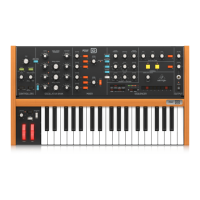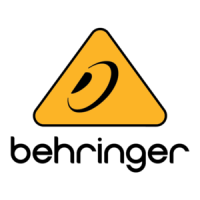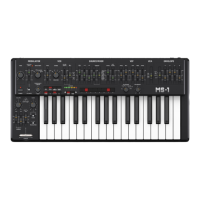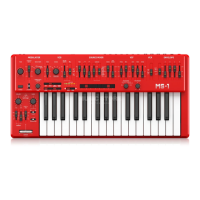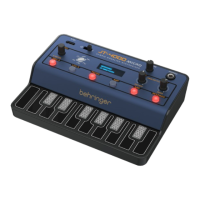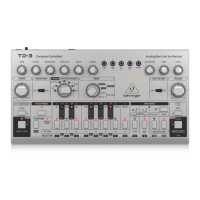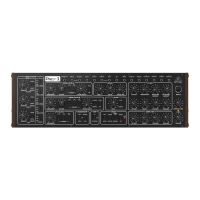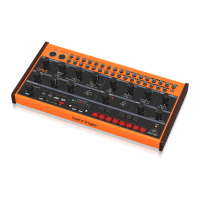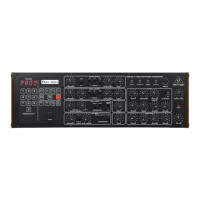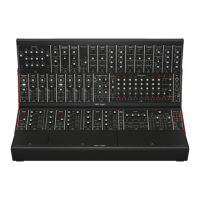8 MODEL D User Manual
3.1.1 MIDI Section
(1) USB PORT - this USB type B jack allows connection to a computer. The
MODEL D will show up as a class-compliant USB MIDI device, capable of
supporting MIDI in and out.
USB MIDI IN - accepts incoming MIDI data from an application.
USB MIDI OUT - sends MIDI data to an application.
(2) MIDI IN - this 5-pin DIN jack receives MIDI data from an external source.
This will commonly be a MIDI keyboard, an external hardware sequencer,
a computer equipped with a MIDI interface, etc.
(3) MIDI THRU - this 5-pin DIN jack is used to pass through MIDI data
received at the MIDI INPUT. This will commonly be sent to another MODEL
D synthesizer to run a Poly Chain or to a drum machine assigned to a
dierent MIDI Channel.
(1)
3.1.2 Controllers Section
(4) OSC3/FILTER EG - switch between OSC3 or the Filter Envelope as a
modulation source.
(5) GLIDE - adjust the amount of Glide (Portamento), between notes on the
keyboard.
(6) TUNE - adjust the frequency of oscillators 1, 2, and 3. (OSC3 is not aected
if the OSC3 CONTROL switch is o .)
(7) OSCILLATOR MODULATION - when ON, the three oscillators are
modulated by the modulation mix, set by the MOD MIX knob.
(8) MOD MIX - adjust the modulation mix between OSC3/Filter EG and Noise/
LFO.
(9) NOISE (MOD SRC)/ LFO - switch between Noise (or external modulation
source) or Low Frequency Oscillator (LFO) as a modulation source.
(10) MOD DEPTH - adjust the modulation depth from o to maximum. The
modulation depth can also be adjusted using the modulation wheel on a
MIDI keyboard.
(11) WAVE SHAPE - select the LFO wave shape from either triangular or square
wave.
(12) LFO RATE - adjusts the frequency of the LFO.
